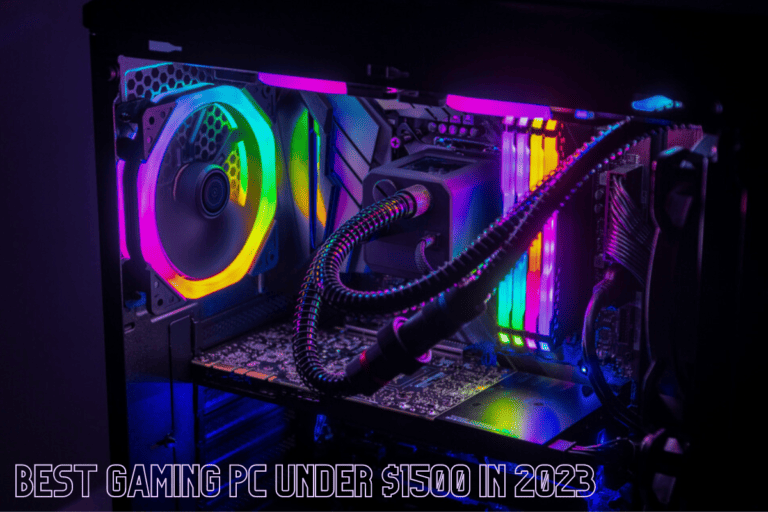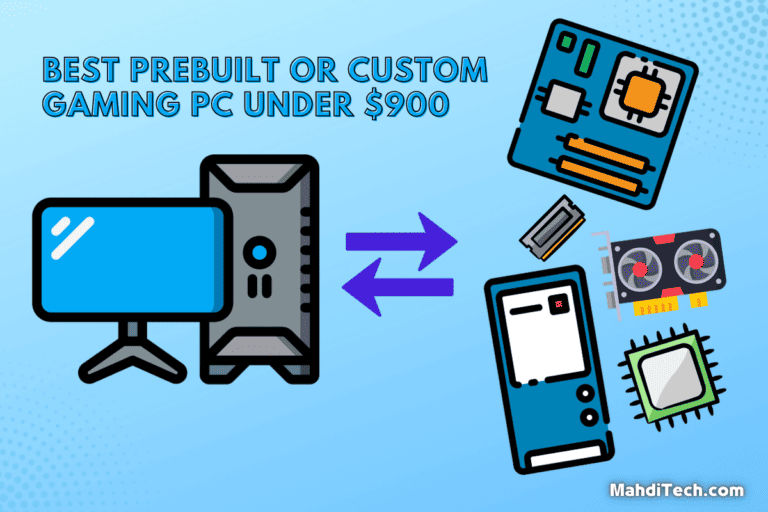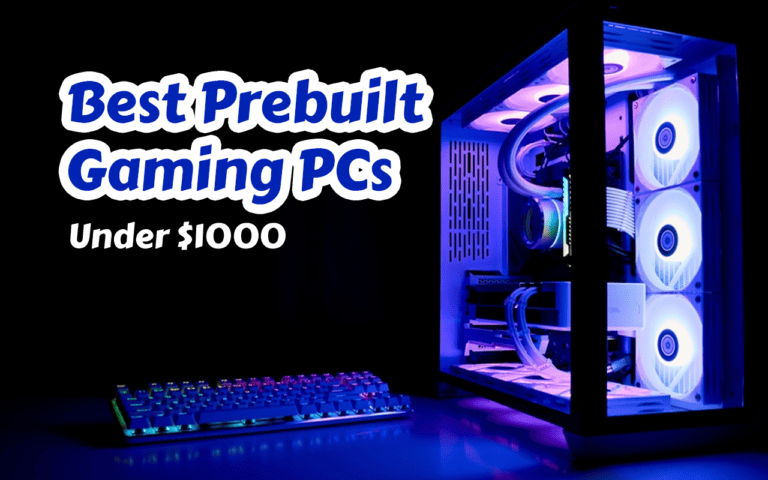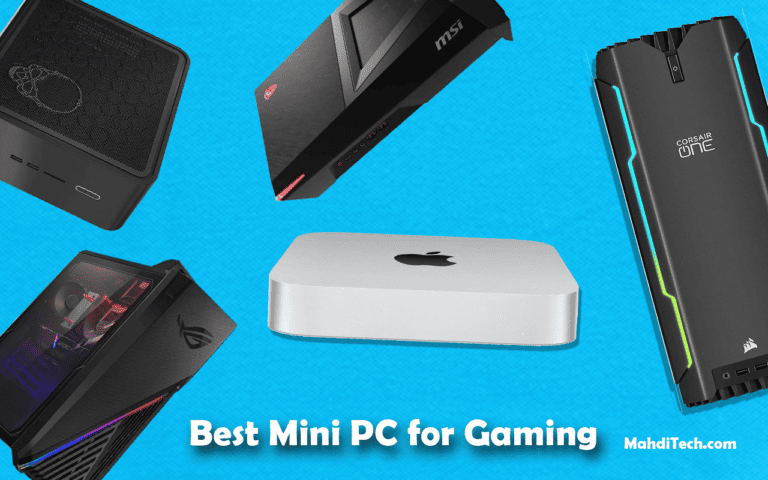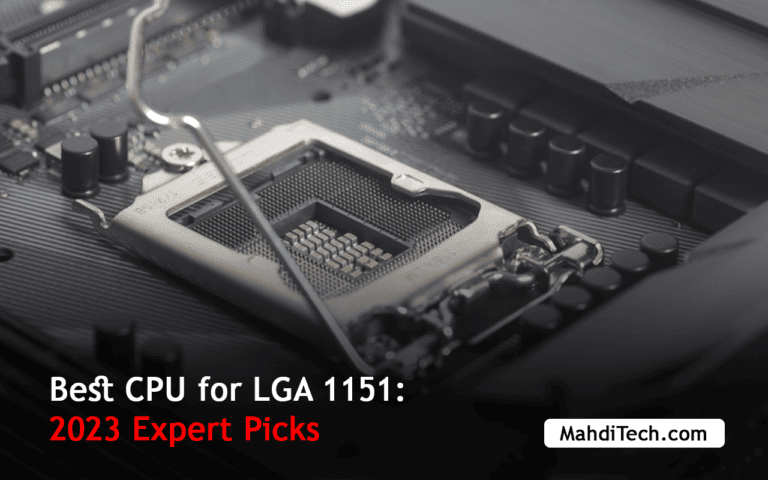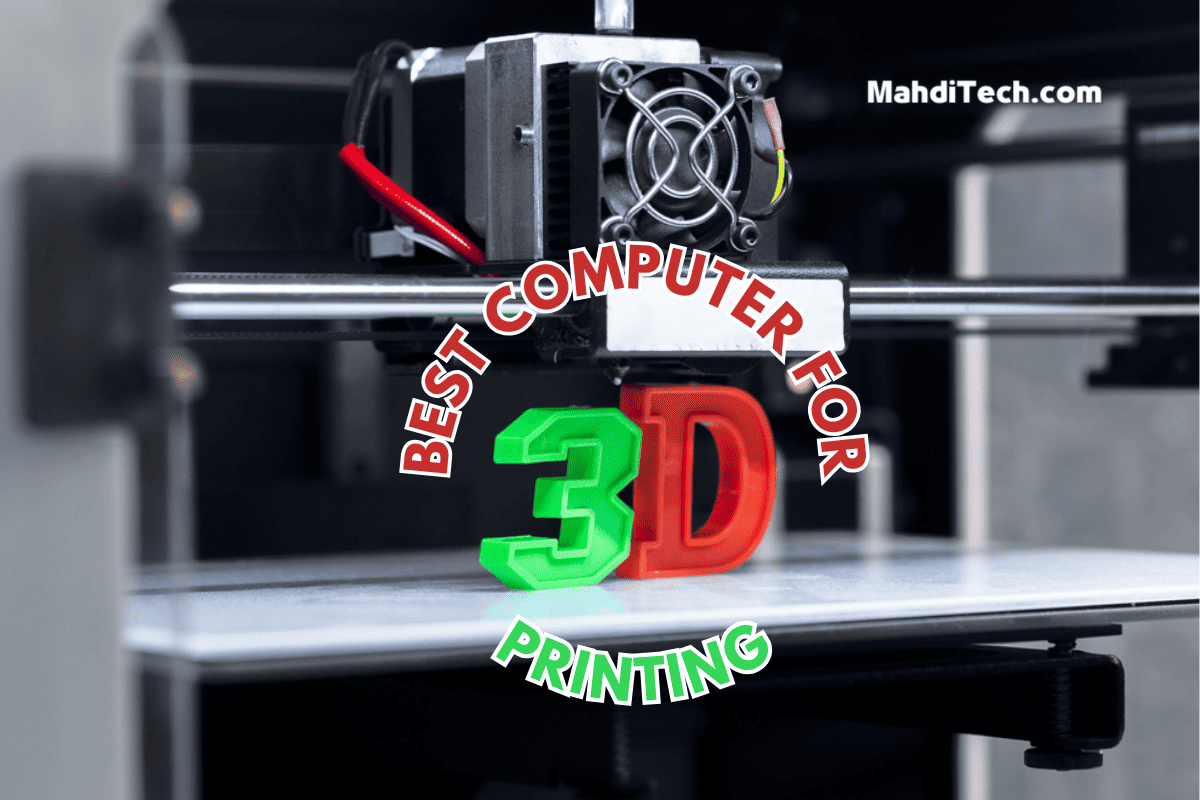
Have you ever found yourself staring at a stalled 3D print job, questioning whether your computer was the weak link in the chain?
You’re not alone. In the captivating world of 3D printing, a powerful computer can be the difference between a masterpiece and a paperweight. Imagine controlling complex 3D designs, running multiple software applications simultaneously, and executing print jobs without a hiccup—all thanks to your perfectly selected computer.
So, why settle for anything less? Keep reading as we unveil the “Best Computer for 3D Printing,” a guide packed with expert recommendations to help you make an informed decision tailored to your layered fabrication needs.
Are you in a rush or can’t wait to get to the good stuff? Here’s a quick summary of our top picks for the best computers for 3D printing.
Quick Summary of Top Picks:
- Apple iMac Pro – Best Overall
- Dell XPS 8940 Desktop – Best for Hobbyists
- Acer Aspire TC-1760-UA92 Desktop – Best Budget Pick
- Microsoft Surface Studio 2 – Best for Multitasking
- HP Z8 G4 Workstation – Best Long-Term Investment
What is the Best Computer for 3D Printing?
Finding the right computer for 3D printing can feel like navigating a maze.
Whether you’re a hobbyist, a semi-professional, or just dipping your toes into the 3D printing waters, the sheer variety of desktop computers available can be overwhelming. Add technical jargon, and it’s enough to make anyone’s head spin.
While you could settle for a general-purpose computer, when it comes to layered fabrication, not just any machine will do. You’ll need something robust, reliable, and compatible with the tasks you’ll be running—3D modeling, slicing, or real-time printing control.
With the challenge ahead, you may ask: What is the right computer to achieve optimal 3D printing performance? Don’t worry; we’ve got you covered.
Here are our top picks for desktop computers that excel in this domain.
1. Apple iMac Pro
- CPU: 3.2GHz 8-Core Xeon
- RAM: 64GB RAM
- Storage Capacity: 1TB SSD
Pros
Overview:
I don’t say this lightly, but if you’re in the 3D printing game, whether as a hobbyist, a professional, or something in between, you’ll need a desktop computer that doesn’t stutter at the sight of complex, high-resolution models.
Enter the Apple iMac Pro. This is a beast that delivers on all fronts, and it’s an investment that will not only fuel your 3D printing projects but will make the entire printing process more streamlined and efficient.
Power-packed Processor
Intel’s Xeon W series processor is at the core of this computing marvel. Depending on your preference, it comes in various configurations ranging from 8-core to 18-core.
Turbo Boost speeds up to 4.5GHz ensure your machine doesn’t sweat even when handling the most intricate 3D printing tasks. We’re talking about zero lag and seamless operation, folks.
And let’s face it, when it comes to 3D printing, the right computer with a powerful Intel core makes all the difference.
Crystal Clear Display
Let’s switch gears and talk about its display. This machine provides immense clarity, boasting a 27-inch (diagonal) Retina 5K display with a resolution of 5120‑by‑2880.
This is particularly useful when working on high-resolution models for layered fabrication, where even a minor design flaw could lead to printing disasters.
Unmatched Graphics
This desktop computer doesn’t just stop at the processor and display; it ensures that you get the absolute best in terms of graphics as well.
With options ranging from Radeon Pro Vega 56 to Vega 64X, you’re guaranteed to experience crystal-clear graphics. This is handy when visualizing and manipulating your 3D models before sending them to print.
Mammoth Storage and Memory
The storage options are equally impressive, ranging from a basic 1TB SSD to an outrageous 4TB. Now, 3D printing files may not consume tons of storage, but if you’re like me, who does a ton of multitasking, you know that extra storage space is always a good idea.
Memory isn’t a slouch either, starting at 32GB and going up to a staggering 256GB, ensuring you can run multiple heavy-duty applications side by side hassle-free.
Yes, the iMac Pro is expensive and not for the faint-hearted. However, you get an all-in-one powerhouse that ensures you don’t have to look elsewhere for the next several years.
It’s reliable, exceptionally powerful, and built for the future.
Additional Features
From its Nbase-T Ethernet support to the four Thunderbolt 3 (USB-C) ports, the iMac Pro is future-ready and highly expandable. The machine comes pre-loaded with macOS, the most advanced desktop operating system, which ensures you’re always ahead of the curve. And let’s not forget about its accessibility features that make the iMac Pro inclusive for everyone.
The Apple iMac Pro is undoubtedly the best desktop computer for layered fabrication. It comes with a steep price tag, but if you’re serious about 3D printing, this is an investment you won’t regret.
Would you rather save a few bucks now and compromise on quality and performance, or would you secure a machine that guarantees a smooth sailing journey in your 3D printing endeavors? The choice is yours.
2. Dell XPS 8940 Desktop
- CPU: Intel Core i7-11700
- RAM: 32GB DDR4 RAM
- Storage Capacity: 512GB SSD + 1TB HDD
Pros
Overview:
When it comes to 3D printing, not just any computer will do. It would be best to have a machine that can keep up with the complex tasks of 3D modeling and rendering while offering robust performance for other creative projects. That’s precisely where the Dell XPS 8940 Desktop shines.
Hardware Specifications
Powered by the 11th Gen Intel Core i7-11700 processor, this computer offers a clock speed of 4.9 GHz, ensuring you have more than enough processing power for all your 3D printing endeavors. Add to that the 32 GB DDR4 RAM, and you’ve got a powerful machine that won’t stutter during critical rendering tasks.
Storage-wise, the system offers a combination of 512GB PCIe M.2 SSD and a 1TB SATA 7200 RPM storage. With 1000 GB of memory storage capacity, you’ll have plenty of space to store complex 3D models and time-lapse videos of your layered fabrication processes.
Graphics and Rendering
Intel UHD Graphics 750 comes standard, giving you shared graphics memory suitable for moderate 3D modeling and rendering tasks. Although not top-tier, this graphics card still provides satisfactory performance for hobbyists.
Power and Cooling
The machine features a 360W power supply unit (PSU), robust enough to support both the processor and the graphics card. A reliable power supply is crucial when you’re halfway through a critical 3D print and can’t afford a sudden shutdown.
The tower has been intelligently and purposefully designed to maximize airflow, starting from the front bezel. The regulated cooling system ensures all components remain cool, even under intense workloads. This is particularly important when your computer needs to perform 3D modeling and rendering tasks for extended periods.
Expandability and Ports
The Dell XPS 8940 doesn’t just stop at meeting your present needs; it’s prepared for your future ones, too. It comes with three PCIe slots, allowing you to add sound cards, additional graphics cards, and other expansions as you grow your 3D printing setup. With ten total USB ports, including four on the front for easy access, connecting all your layered fabrication peripherals becomes a snap.
The Ideal Machine for 3D Printing Hobbyists
This Dell desktop might be commonly categorized under “Mid-range Gaming PCs,” but this very balance between price and performance makes it ideal for 3D printing hobbyists. You get a machine with a robust power supply, excellent clock speed, and ample storage for all your 3D models.
In conclusion, the Dell XPS 8940 is a good computer for anyone delving into the world of layered fabrication. With features like a reliable power supply, decent graphics card, and high clock speed, this machine offers a potent combination of features that make 3D modeling and rendering a breeze for hobbyists. Your search might end here if you’re looking for a computer that can handle 3D printing without any hitches.
3. Acer Aspire TC-1760-UA92 Desktop
- CPU: 12th Gen Intel Core i5-12400 6-Core Processor
- RAM: 12GB 3200MHz DDR4
- Storage Capacity: 512GB NVMe M.2 SSD
Pros
Overview:
Core Capabilities: Seamless 3D Printing Workflows
The Acer Aspire TC-1760-UA92 Desktop stands out among cheap prebuilt PCs tailored for layered fabrication. Thanks to its 12th Gen Intel Core i5-12400 6-Core Processor with clock speeds of 2.5 GHz, this budget computer efficiently runs 3D modeling and slicer software. The design software you rely on for your 3D printing tasks will benefit from the processor’s performance.
Graphical Prowess: Integrated but Competent
While the machine lacks a dedicated graphics card, the integrated Intel UHD Graphics 730 does the job for basic 3D rendering tasks. This feature is adequate for simple design software and slicer software applications.
Connectivity: Universal and Flexible
When it comes to connecting with your 3D printer, design software, or other peripherals, this machine doesn’t disappoint. Intel Wireless Wi-Fi 6 AX201 and Bluetooth 5.2 ensure wireless flexibility, while multiple USB 2.0 and 3.0 ports provide wired options.
Storage Solutions: Agile and Spacious
The desktop has a 512GB NVMe M.2 SSD, providing rapid access to your slicer software and large 3D design files. This feature distinguishes it from cheap prebuilt PCs by offering fast read and write operations.
Future-Proof Design: Expand as You Grow
One of the selling points of this budget computer is its expandability. The computer tower’s design provides toolless access to internal components, making it easy to upgrade the graphics card or increase clock speeds by changing the CPU as your 3D printing needs evolve.
System Environment: Windows 11 Compatibility
The Acer Aspire TC-1760-UA92 runs on Windows 11 Home, ensuring compatibility with various 3D printing and design software. This allows you to choose the slicer software and other applications you prefer without worrying about system conflicts.
Summary: Your Cost-Effective Gateway to 3D Printing
In summary, the Acer Aspire TC-1760-UA92 Desktop is an excellent budget computer for those starting in 3D Printing. With decent clock speeds, various connectivity options, and room for expansion, it is ideal for hobbyists who need affordability without compromising essential features.
4. Microsoft Surface Studio 2
- CPU: Intel Core i7
- RAM: 32GB RAM
- Storage Capacity: 1TB
Pros
Overview:
The Microsoft Surface Studio 2 is not just another expensive computer; it’s a masterpiece designed for professionals in various fields, including 3D printing.
With its Intel Core i7 processor and 32GB RAM, this machine can handle computer-aided design software effortlessly while still having enough power to manage slicing software for your 3D printing tasks.
Hardware Specifications
The Surface Studio 2 features a massive 28-inch screen with a maximum resolution of 4500×3000 pixels. The display is not just large, but it’s also stunningly vibrant and crisp, making it ideal for 3D modeling and rendering.
Powered by an NVIDIA GeForce GTX 1070 graphics card with 1GB of dedicated RAM, this device ensures your design software runs without a hitch. The 1TB SSD offers ample storage space for all your 3D models, software, and other files.
Performance
When it comes to 3D printing, a decent computer must have many multitasking capabilities.
The Surface Studio 2’s Core i7 processor, with a clock speed of 1.3 GHz and 32GB DDR4 RAM, allows you to run multiple heavy-duty applications simultaneously. This is particularly useful when running slicing software while working on a computer-aided design (CAD) project.
Software Compatibility
Running on Windows 10 Pro, this machine is compatible with various 3D printing software.
From slicing software to complex 3D modeling tools, the Surface Studio 2 can handle them all effortlessly. The pre-installed operating system ensures you have the most up-to-date security features and performance enhancements.
Connectivity and Additional Features
For those looking for a range of connectivity options, the Surface Studio 2 doesn’t disappoint. It has five USB 3.0 ports and Wireless 802.11ab for fast and seamless data transfer.
The package includes a Surface Pen, Surface Mouse, and Surface Keyboard, providing a complete setup right out of the box.
User Experience
One of the standout features of the Surface Studio 2 is its ergonomic design. The adjustable 28″ display can be moved to work upright at your desktop or laid low at your drafting table, providing an intuitive and flexible work environment.
This feature is especially beneficial for those involved in 3D printing as it allows for a more interactive design experience.
Final Thoughts
While it’s an expensive computer, the Microsoft Surface Studio 2 offers unmatched multitasking capabilities, making it perfect for those deeply involved in 3D printing and modeling.
Its powerful hardware and versatile design make it a luxurious yet indispensable tool for anyone looking to take their 3D printing projects to the next level.
5. HP Z8 G4 Workstation
- CPU: 2X Intel Xeon Silver 4114 (20-Cores) up to 3.0GHz
- RAM: 128GB DDR4
- Storage Capacity: 512GB NVME M.2 Turbo Drive
Pros
Overview:
A Powerhouse for Specialized Tasks
The HP Z8 G4 Workstation is no ordinary computer; it’s a special computer designed for those who need to tackle very large files frequently, like 3D printing files and CAD software projects.
Running on Windows 10 Pro, this tower PC is engineered to meet the demands of high-end specs for 3D modeling and rendering.
Supreme Processing Speed
Equipped with two Intel Xeon Silver 4114 processors, the HP Z8 G4 provides a powerful processor setup with 20 cores running up to 3.0GHz.
This level of computing power means that you can run multiple instances of slicing or CAD software while also taking on complex 3D printing projects without even a hint of slowdown.
Memory and Storage
Regarding memory, the HP Z8 G4 is an absolute monster. With 128GB of DDR4 RAM, this machine can handle even the most data-intensive 3D printing tasks.
The 512GB NVME M.2 Turbo Drive ensures that data read and write times are quick, allowing for smooth operation when working with large files commonly used in 3D printing.
High-Performance Graphics
Thanks to its Nvidia Quadro P2000 5GB graphics card, visual performance is not compromised.
This is essential for anyone working in 3D modeling and rendering as it ensures that every detail is visible and manipulable in real-time, an essential feature for High-Performance Small PCs.
Connectivity
With 10 USB 3.0 ports and Ethernet connectivity, you can connect 3D printers, scanners, and other peripherals crucial for a complete layered fabrication setup.
Expandability
Future-proof your investment with the HP Z8 G4. Its computer tower design allows for easy expansion and upgrades, ensuring it remains a long-term investment for your 3D printing needs.
Final Thoughts
The HP Z8 G4 Workstation is ideally suited for layered fabrication professionals looking for a powerful, reliable, and expandable system.
With its high-end specs, including an extremely powerful processor and ample storage options, it’s well-equipped to handle large files often associated with 3D printing and CAD software. This makes it an excellent long-term investment for anyone serious about 3D printing.
Why Computer Specifications Matter in 3D Printing
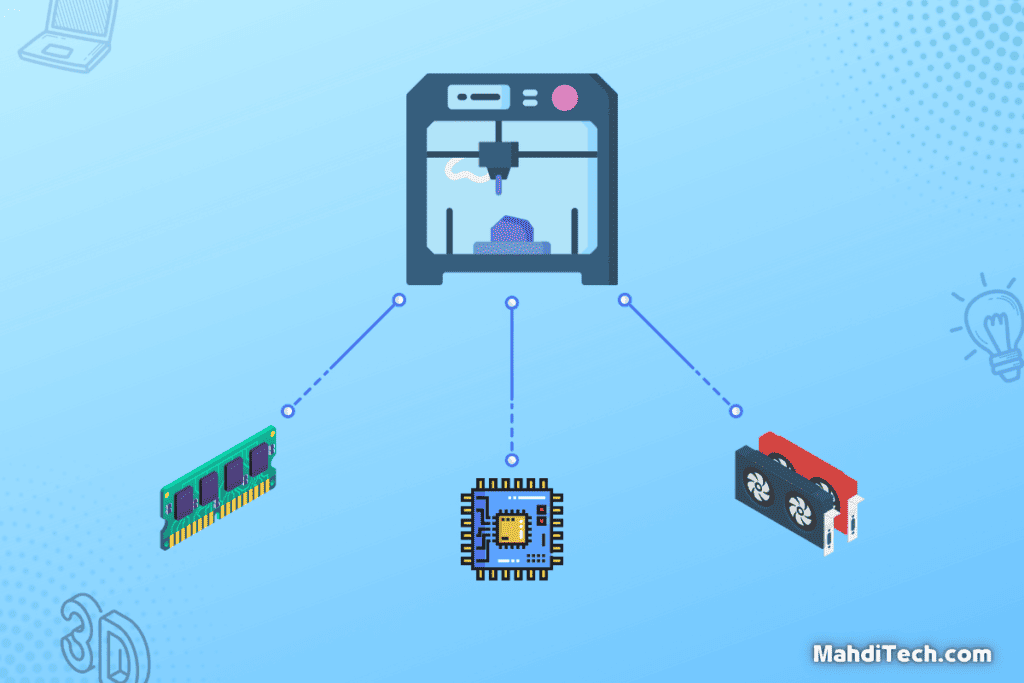
If you’re into 3D printing, you’ve likely faced issues like software lag or slow processing speeds. Ever wondered why?
The answer often lies in your computer’s specifications. This guide will focus on three game-changing components: RAM, Processor Power, and Graphics Capability.
Understanding these elements is not just good-to-know information—it’s crucial for anyone serious about 3D printing.
Stick around, and you’ll see exactly why the right specs can make or break your layered fabrication experience.
1. RAM and Why It’s Crucial:
When using a 3D printer, RAM (Random Access Memory) is not just a techy term; it’s an absolute necessity. Why?
Imagine you’re working on 3D software to create an STL file for your next big project. If you’ve got insufficient or outdated RAM—let’s say something lower than DDR5—your system will lag, freeze, or even crash.
And let’s face it, no one wants to experience those setbacks during a creative process. RAM acts as the worktable for your computer, providing the space needed to read and write data.
The more RAM you have, the larger your “worktable,” and the smoother your software will run.
In short, don’t skimp on RAM if you use complex 3D software. Although it might seem tempting to focus on other specs, don’t underestimate the role of RAM in your 3D printing journey.
2. Processor Power:
When dealing with 3D printing, the CPU, or Central Processing Unit, becomes the backbone of your entire operation. Think of it as the brain of your computer that takes on the heavy lifting of converting your intricate designs into 3D objects.
High-end CPUs excel in rendering these complex structures, making the process smoother and faster. With tasks as CPU-intensive as 3D printing, you’ll need a processor robust enough to handle the initial design phase and the subsequent stages involving CPU rendering.
While you might think that any modern CPU could run a 3D printer, that’s a misconception. The capability of your CPU can dictate the speed at which you can complete a project, impacting how quickly you can move on to new jobs or iterations of your design.
Different CPUs have different use cases or optimal settings for particular types of work.
For instance, some might excel in multitasking, while others are designed for faster single-core performance essential for 3D rendering tasks.
So, before you dive into 3D printing, ensure that your processor has the muscle to support your ambitions. Investing in the right CPU can distinguish between seamless workflow and a bottlenecked, frustrating experience.
3. Graphics Capability:
While the CPU is often considered the brain of your computer, when it comes to 3D printing, don’t underestimate the muscle of a solid GPU or Graphics Processing Unit.
The GPU specializes in handling visuals and can significantly accelerate the process of rendering your 3D models. But not just any GPU will do; you’ll require a powerful one, especially for intricate designs and high resolution.
When considering the best GPU for your 3D printing setup, consider the complexity and the level of detail in the objects you’ll be rendering.
Basic designs might get by with an entry-level GPU, but you’ll likely need a high-end model supporting gpu rendering faster for more sophisticated projects.
These high-end GPUs often have additional cores and higher clock speeds to handle more complicated computational tasks.
The ‘high resolution‘ aspect is another area where a robust GPU shines. If your 3D printing work involves creating detailed, high-resolution objects, a powerful GPU can make a noticeable difference in both the speed and quality of your renderings.
It streamlines the entire process, from the initial design to the final 3D print, ensuring that what you imagined is precisely what gets printed.
In short, skimping on the GPU might save you some money upfront, but it’s likely to cost you in the long run in terms of time and quality.
A high-quality, powerful GPU is an investment that pays for itself by allowing you to create better, more intricate designs more efficiently.
Conclusion
In summary, the computer you use for 3D printing matters as much as the printer itself.
RAM keeps your 3D software humming, the processor speeds up tasks, and a solid GPU ensures high-quality rendering.
Cutting corners on specs may save you money now but will cost you efficiency and quality later.
So, why wait?
Equip yourself with a computer that meets your 3D printing needs and takes your creativity to the next level. Happy 3D printing!






